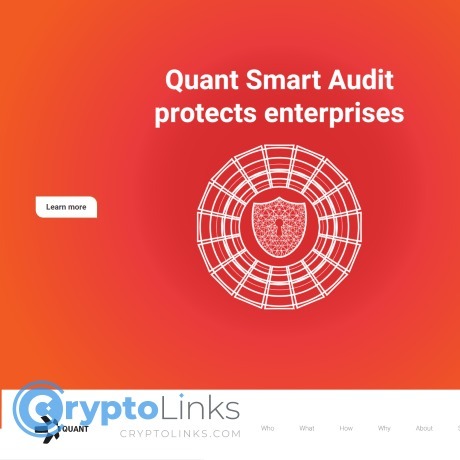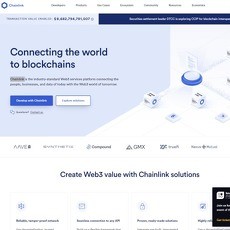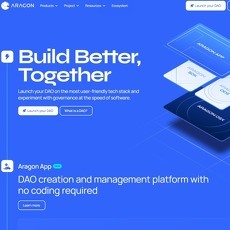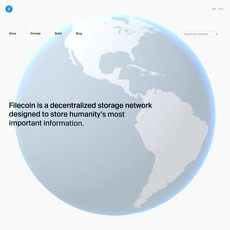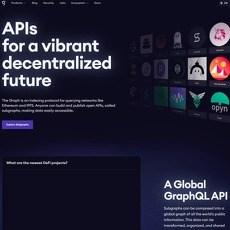Quant (QNT) Review
Quant (QNT)
quant.network
Unlocking The Quantum of Blockchain Through Quant (QNT): A Comprehensive Review
Unlocking The Quantum of Blockchain Through Quant (QNT): A Comprehensive Review Ever found yourself at the crossroads of blockchain interoperability? I did, and the trail led me to Quant. This project is not your typical blockchain venture. It's more of an audacious expedition into melding the realms of various blockchains to function as one big, happy family. Sounds like a cool guy's dream, doesn’t it? Well, let’s delve deeper into the Quant (QNT) narrative and see if it lives up to the hype.
Tracing the Blueprint: What is Quant?
Quant is like the master key to a chest of blockchain treasures. It encompasses the Overledger blockchain operating system and the QNT token, both playing pivotal roles in ensuring smooth interoperability among multiple blockchains and linking global networks with an agility that is rare in today’s blockchain scape. At the epicenter of Quant is the Quant Network—a brilliant concoction designed to automate trust functions between blockchains, courtesy of the Overledger operating system. Picture this as the first-ever operating system engineered for blockchains, with a noble mission: to interconnect blockchains and networks (spanning financial services, healthcare, and beyond) on a global scale without throwing interoperability out the window. The Overledger is envisaged as the cornerstone of a future digital economy ecosystem, opening doors for developers and businesses to craft decentralized multi-chain applications (dubbed MApps) for their clienteles. To hop onto the Overledger train, you'll need some QUANT (QNT) tokens in your pocket, as these tokens are the admission fee for platform use or the annual licenses.
Quant’s Ambition: Bridging The Blockchain Isles
The genesis of the Overledger/Quant dream traces back to the days when its CEO and founder, Gilbert Verdian, was navigating the healthcare sector labyrinth. He stumbled upon the pivotal role of interoperability in ensuring seamless coverage for patients scattered across diverse networks and entangled in multiple datasets. With a vision of birthing the “Internet of Trust”, Gilbert and his tech sorcerers embarked on a journey to solve a slew of challenges. They identified that the blockchain and distributed ledger technologies, despite their growing appeal, still stutter when it comes to seamless interoperability among internal ledgers and external networks. Quant emerges as the blockchain's “missing link”, with Overledger serving as the gateway for networks, acting somewhat like a “magic” portal boasting a functional interface. It fosters communication not just within the ecosystem but also with the desired blockchain, moving beyond value transfer to exchange messages and data. The Quant saga doesn’t stop here. The Overledger architecture is tailored to cut down the high costs and technological demands synonymous with developing specific blockchain-based solutions. It's like having a buffet of blockchain features at your disposal, ensuring businesses are not handcuffed to a single blockchain, thereby expanding the realm of possibilities.
The Overledger Mojo: How Does It Work?
The magic behind Overledger's interoperability and scaling prowess is its layered architecture, somewhat reminiscent of the TCP/IP models employed in communication networks. The idea was to segregate tasks into layers, each tasked with its unique responsibilities: Transaction Layer: Here is where all transactional sagas unfold, hosting operations necessary to reach consensus across multiple blockchain realms. Messaging Layer: This layer plays the messenger, handling all vital information fetched from the ledgers, such as smart contract data, metadata, and transaction data. Filtering and Ordering Layer: Messages are sieved and ordered here, paving the path for establishing connections between messages from the Messaging Layer. Application Layer: Messages that pass the validity test find their way here, where they influence the state of the respective application.
The Quant App Store: A Melting Pot of MApps
Inspired by this architecture, the Quant Network flaunted its prowess to read and monitor transactions across multiple ledgers, kickstarting with Bitcoin, Ethereum, and Ripple. The same architecture is also the backbone of the Quant App Store, which is envisioned as a haven where developers can concoct and launch their MApps. The App Store is not just a MApp marketplace, but a hub where applications can feature zero charge rates for usage and transactions, one-time fees, or even a monthly subscription model. However, to get a slice of this MApp pie, customers will need to have a stash of Quant tokens to access the platform.
Quant SAAS: Tailored Blockchain Solutions
Quant is also flexing its muscles in the Software-As-A-Service (SaaS) domain, crafting solutions to meet the unique demands of various industries. The sectors in focus include healthcare, supply chain, government, and financial services. One of its flagship products, Quant Health, leverages blockchain to ensure healthcare institutions keep their systems ticking seamlessly.
Quant Enterprise and Middleware Products: Beyond the Basics
The visionaries at Quant are not just stopping at creating MApps or SaaS solutions. They are also toiling to conjure business applications that unlock the decentralized nature of the Quant platform, allowing for operability across multiple chains. The areas of interest span from electronic health records, decentralized messaging solutions, to fiat currency gateways.
Quant Tokens (QNT): Your Passport to Quant’s Ecosystem
The QNT tokens are more than just digital assets. They are the gateway to the services or applications within the Quant platform for both users and developers. The access fee isn’t just about the number of tokens but also pegged to a fixed fiat currency amount, offering a level of flexibility in a world where token values can be as volatile as a cat on a hot tin roof. As of March 2019, the market cap for Quant stood at a cool USD 34 million, with QNT making waves on cryptocurrency exchanges like Bittrex and HotBit.
Quant Team: The Brains Behind The Operation
Leading the Quant battalion is Gilbert Verdian (CEO), a veteran with over two decades in the security industry. He's joined by tech maestros like Jean-Paul de Jong (Chief Architect) and Colin Paterson (CTO). The team orchestrated an ICO back in April 2018, raking in about USD 11 million, and now strides forward with a vision to rival the likes of WAN, Cosmos, and Polkadot. Quant is not just a project; it's an ambitious endeavor to untangle the blockchain web that binds us. By facilitating interoperability and fostering innovation, Quant is a vanguard in ushering us into a new era where blockchains do not just co-exist but work in unison, propelling us closer to a decentralized future that's not just a pipe dream.
Frequently Asked Questions (FAQs) about Quant (QNT)
1. What is Quant?
Quant is a technology project encompassing the Overledger blockchain operating system and QNT token aimed at ensuring interoperability among various blockchains. It enables the linkage between global networks and chains flexibly. Overledger allows developers and businesses to create decentralized multi-chain applications (MApps) and connects different blockchains and networks for various sectors like financial services, healthcare, and more.
2. What is the aim of Quant?
Quant aims to provide seamless interoperability among blockchains and networks, making it easier for businesses to adopt blockchain technology without being limited to a single blockchain. This concept is geared towards creating an "Internet of Trust" where data and value can be exchanged effortlessly across different blockchains.
3. What are QNT tokens used for?
QNT tokens are crucial for accessing the Overledger system. They are used to pay for platform use fees or annual licenses. Besides, developers and customers need to hold a pre-set number of Quant tokens to access and interact with the platform.
4. How does Overledger work?
Overledger is structured with multiple layers, each performing distinct tasks, much like the TCP/IP models used in communication networks. The layers include: Transaction Layer: Handles transaction storage using ledger technology. Messaging Layer: Manages information retrieval deemed relevant from the ledgers. Filtering and Ordering Layer: Handles message ordering and filtering extracted from the transaction information. Application Layer: Handles updates to the state of applications based on validated messages.
5. What is the Quant App Store?
The Quant App Store is a platform where developers can create, release, and manage MApps. It also provides different fee structures for the usage and transactions, such as zero charge rates, one-time fees, or an optional monthly subscription model. Users are required to hold a pre-set number of Quant tokens to gain access to the platform.
6. What is Quant SAAS?
Quant SAAS is a planned Software-As-A-Service for enterprise and middleware applications tailored to various sector needs. It aims to focus on sectors such as healthcare, supply chain, government, and financial services, offering blockchain-based solutions to help keep their systems operational.
7. Who is behind Quant?
Quant is spearheaded by CEO and founder Gilbert Verdian, who has over two decades of experience in the security industry. He's supported by a team that includes Chief Architect Jean-Paul de Jong and CTO Colin Paterson.
8. What was the outcome of Quant's ICO?
Quant conducted its Initial Coin Offering (ICO) in April 2018, raising about USD 11 million.
9. Who are Quant's competitors?
Potential competitors for the Quant platform include WAN, Cosmos, and Polkadot among others, which are also working towards solving blockchain interoperability issues.
10. Where can I trade QNT tokens?
As of last check (March 2019), QNT tokens could be traded on cryptocurrency exchanges like Bittrex and HotBit. However, availability may have changed, and it's advisable to check the latest updates on cryptocurrency exchange platforms.
11. What is the total supply of QNT tokens?
As of March 2019, the total supply of QNT tokens was 14.6 million, with more than 9 million in circulation.
Pros and Cons of Quant (QNT)
Pros:
- Interoperability:
- Quant’s Overledger technology is designed to address one of blockchain technology's significant challenges: interoperability between different blockchains, which enhances its potential for widespread adoption.
- Innovative Technology:
- Being touted as the first blockchain operating system, Overledger represents a fresh and innovative approach to blockchain technology, enabling the creation of multi-chain applications (MApps).
- Industry Use-Cases:
- Quant targets a broad range of industries including healthcare, financial services, government, and supply chain among others. Its diverse use-cases make it a potentially revolutionary project.
- Strong Team:
- The Quant team is led by seasoned professionals with significant industry experience, which could lead to better decision-making and execution of the project’s vision.
- Growing Ecosystem:
- With the development of the Quant App Store and the continuous addition of new applications and solutions, there’s a growing ecosystem around Quant which might lead to more utility and demand for QNT tokens.
Cons:
- Competitive Space:
- The blockchain interoperability space is highly competitive with projects like Cosmos, Polkadot, and others. Quant has to continually innovate to stay ahead.
- Early Stage:
- While promising, Quant's technology is still in the early stages and may face unforeseen challenges as it continues to develop.
- Token Demand and Valuation:
- The demand for QNT tokens is closely tied to the adoption and usage of the Overledger system. If the platform doesn’t gain sufficient traction, it could impact the value and demand for QNT tokens.
- Regulatory Uncertainty:
- Like many blockchain projects, Quant operates in a regulatory grey area which could pose risks to its operation and the value of QNT tokens in the future.
- Complex Technology:
- The technical complexity of the Overledger system might present a steep learning curve for potential users and developers, which could hinder adoption rates.
Quant is an exciting project with a unique approach to solving blockchain interoperability, but like any project, it's not without its challenges. The success of Quant and QNT will likely hinge on the team's ability to execute their vision and navigate the complex and competitive landscape of blockchain technology.

